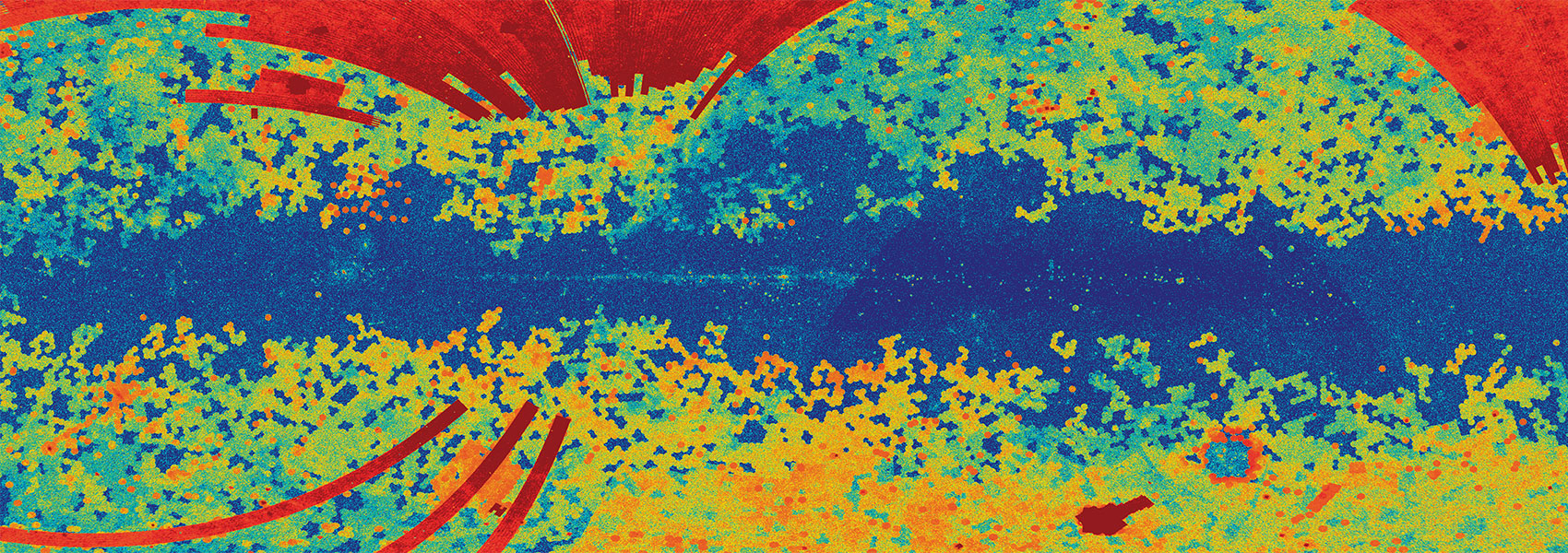July
2023
•
2023ApJ...951L..20C
Authors
•
Carter, Aarynn L.
•
Hinkley, Sasha
•
Kammerer, Jens
•
Skemer, Andrew
•
Biller, Beth A.
•
Leisenring, Jarron M.
•
Millar-Blanchaer, Maxwell A.
•
Petrus, Simon
•
Stone, Jordan M.
•
Ward-Duong, Kimberly
•
Wang, Jason J.
•
Girard, Julien H.
•
Hines, Dean C.
•
Perrin, Marshall D.
•
Pueyo, Laurent
•
Balmer, William O.
•
Bonavita, Mariangela
•
Bonnefoy, Mickael
•
Chauvin, Gael
•
Choquet, Elodie
•
Christiaens, Valentin
•
Danielski, Camilla
•
Kennedy, Grant M.
•
Matthews, Elisabeth C.
•
Miles, Brittany E.
•
Patapis, Polychronis
•
Ray, Shrishmoy
•
Rickman, Emily
•
Sallum, Steph
•
Stapelfeldt, Karl R.
•
Whiteford, Niall
•
Zhou, Yifan
•
Absil, Olivier
•
Boccaletti, Anthony
•
Booth, Mark
•
Bowler, Brendan P.
•
Chen, Christine H.
•
Currie, Thayne
•
Fortney, Jonathan J.
•
Grady, Carol A.
•
Greebaum, Alexandra Z.
•
Henning, Thomas
•
Hoch, Kielan K. W.
•
Janson, Markus
•
Kalas, Paul
•
Kenworthy, Matthew A.
•
Kervella, Pierre
•
Kraus, Adam L.
•
Lagage, Pierre-Olivier
•
Liu, Michael C.
•
Macintosh, Bruce
•
Marino, Sebastian
•
Marley, Mark S.
•
Marois, Christian
•
Matthews, Brenda C.
•
Mawet, Dimitri
•
McElwain, Michael W.
•
Metchev, Stanimir
•
Meyer, Michael R.
•
Molliere, Paul
•
Moran, Sarah E.
•
Morley, Caroline V.
•
Mukherjee, Sagnick
•
Pantin, Eric
•
Quirrenbach, Andreas
•
Rebollido, Isabel
•
Ren, Bin B.
•
Schneider, Glenn
•
Vasist, Malavika
•
Worthen, Kadin
•
Wyatt, Mark C.
•
Briesemeister, Zackery W.
•
Bryan, Marta L.
•
Calissendorff, Per
•
Cantalloube, Faustine
•
Cugno, Gabriele
•
De Furio, Matthew
•
Dupuy, Trent J.
•
Factor, Samuel M.
•
Faherty, Jacqueline K.
•
Fitzgerald, Michael P.
•
Franson, Kyle
•
Gonzales, Eileen C.
•
Hood, Callie E.
•
Howe, Alex R.
•
Kuzuhara, Masayuki
•
Lagrange, Anne-Marie
•
Lawson, Kellen
•
Lazzoni, Cecilia
•
Lew, Ben W. P.
•
Liu, Pengyu
•
Llop-Sayson, Jorge
•
Lloyd, James P.
•
Martinez, Raquel A.
•
Mazoyer, Johan
•
Palma-Bifani, Paulina
•
Quanz, Sascha P.
•
Redai, Jea Adams
•
Samland, Matthias
•
Schlieder, Joshua E.
•
Tamura, Motohide
•
Tan, Xianyu
•
Uyama, Taichi
•
Vigan, Arthur
•
Vos, Johanna M.
•
Wagner, Kevin
•
Wolff, Schuyler G.
•
Ygouf, Marie
•
Zhang, Xi
•
Zhang, Keming
•
Zhang, Zhoujian
Abstract
•
We present JWST Early Release Science coronagraphic observations of the super-Jupiter exoplanet, HIP 65426b, with the Near-Infrared Camera (NIRCam) from 2 to 5 μm, and with the Mid-Infrared Instrument (MIRI) from 11 to 16 μm. At a separation of ~0.″82 (87 ${}_{-31}^{+108}$ au), HIP 65426b is clearly detected in all seven of our observational filters, representing the first images of an exoplanet to be obtained by JWST, and the first-ever direct detection of an exoplanet beyond 5 μm. These observations demonstrate that JWST is exceeding its nominal predicted performance by up to a factor of 10, depending on separation and subtraction method, with measured 5σ contrast limits of ~1 × 10-5 and ~2 × 10-4 at 1″ for NIRCam at 4.4 μm and MIRI at 11.3 μm, respectively. These contrast limits provide sensitivity to sub-Jupiter companions with masses as low as 0.3M Jup beyond separations of ~100 au. Together with existing ground-based near-infrared data, the JWST photometry are fit well by a BT-SETTL atmospheric model from 1 to 16 μm, and they span ~97% of HIP 65426b's luminous range. Independent of the choice of model atmosphere, we measure an empirical bolometric luminosity that is tightly constrained between $\mathrm{log}\left({L}_{\mathrm{bol}}/{L}_{\odot }\right)$ = -4.31 and -4.14, which in turn provides a robust mass constraint of 7.1 ± 1.2 M Jup. In totality, these observations confirm that JWST presents a powerful and exciting opportunity to characterize the population of exoplanets amenable to high-contrast imaging in greater detail.
Links



